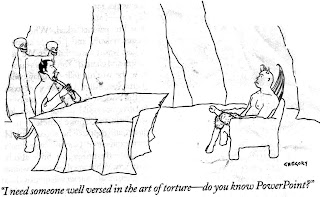 The internet - and social media in particular - has opened up vast arenas for conversation and feedback that can easily take on lives of their own. For small businesses, this kind of organic conversation can be especially valuable.
The internet - and social media in particular - has opened up vast arenas for conversation and feedback that can easily take on lives of their own. For small businesses, this kind of organic conversation can be especially valuable.For instance, a post on your blog or website might prompt someone else to blog about you and then others to comment or share that via FriendFeed or StumbleUpon or Twitter and make commentary of their own. How to keep track? Tonight, our Plurkshop on the social community Plurk discussed the challenges and benefits of that reality, and uncovered a few tools to help listen to what’s being said about you, your company, and your brand on the web.
Challenges we cited:
- Conversations about you – your brand, your blog, your company – are happening everywhere, including in places you haven’t looked.
- Fragmented conversations across the web and so many tools for sharing information can make it difficult to keep track of what people are saying about you and your brand.
- Dispersed commentary makes us worry that we’re missing important feedback and opportunities to engage in conversation with people who are talking about us.
- The more a conversation fragments, the more it can lose context and relevance to the original topic. Comments without context can be less valuable to those who read them.
- As a business owner/brand manager/blogger, you need to go where the conversation is and respond to it there, which can be taxing if you have several brands and/or a lot of content that sparks discussion.
- Participating in discussions online can be intimidating for some people. How can you make it easy and welcoming for them to do so?
Some of the main takeaways from tonight:
- The spirit of community conversation is more important than trying to control it. And controlling it is futile, anyway, so it’s best to embrace it. Listen and engage as best you can.
- Fractured and organic discussion encourages new points of view. Different perspectives add value to the conversation. Actively encourage others to take the conversation to their own communities and build upon it or take it in a new direction.
- The community should be able to use whatever tools are helpful to them to engage the conversation and comment. Readers want and will embrace content portability so they can take the discussion wherever they want. It’s our job as those creating the content to do our best to follow it.
- Commenting and engaging others on their “turf” feels more natural, and demonstrates listening flexibility. It also gives businesses and brands opportunities to engage people they might not have otherwise found.
- Traveling conversation can expose new audiences to your content/brand/blog.
- Search Engine Optimization: Fractured conversations are good for search engine optimization so long as they link back the original source. Links that other people create to your content are gold, especially to bloggers and brands.
- The evolution of this kind of conversation is demonstrating the very essence – and power – of social media.
- Not all internet users find their information in the same manner, so the more avenues and options for them to participate, the better.
Google Alerts - Get email updates about search results for the terms you choose, including blogs
Technorati - Comprehensive blog search
Co.mments - track conversations related to sites you specify
Friendfeed comments plugin for WordPress users
Serph - A search engine tracking what's being said online about your specific search terms
Addictomatic - a search engine that populates results from other sites and search engines.
Disqus - a comment system for your blog that claims to make comments more interactive and easier to manage
Radian6 - a more robust social media monitoring solution that requires some $$ investment
SiteMeter - free site counter and statistics tracker
ClickTracks - web analytics tools starting at about $50/month
Google Analytics - free web analytics tools
PageFlakes - you can create a customized page to aggregate your monitoring tools and sites
Statcounter - free hit counter and web stats tools
LiJit - a search widget for your blog that provides stats on your visitors and what they're looking for
NetNewsWire - a Mac OS RSS feed reader
NetVibes - a personal page aggregator, like PageFlakes
Here’s the link to the full Plurkshop conversation. Take this back to your community and discuss how you're listening to conversations, and what challenges and triumphs you're having. What’s your take on the nomadic nature of conversation in today's hyperconnected world?



 I went to
I went to 












